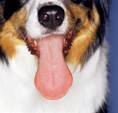Greg Alldrich, PhD is a consultant to the pet food industry and he frequently writes for PetFoodIndustry.com. I don’t agree with much of his writings, as typically he condones the use of many synthetic ingredients in pet foods. But a recently published article written by Dr. Aldrich is very good – encouraging the pet food industry to learn more about how pet food ingredients are effected during the cooking process.
Dr. Aldrich explains that the cooking process of pet foods – both kibble and canned – “provides a number of benefits, including convenience, enhanced flavor and texture, improved consistency, pathogen control and decreased spoilage.” He continues “However, extensive processing can increase variability, destroy essential nutrients and create unwholesome by-products. From a formulator’s perspective, this creates a dilemma regarding how to assure the diet is sufficiently fortified while avoiding excess after accounting for processing effects.”
From an article provided for petsumers on the Pet Food Institute website (lobby organization of Big Pet Food), the following diagram explains the process of making kibble pet food by extrusion.

Step one, dry and wet ingredients may be ground, and then mixed together to form pet food dough.
Step two, the pet food dough is “preconditioned” by heat and steam.
Step three, the extrusion process is where the dough is forced through a channel with what looks similar to a giant screw in the middle. The pet food dough is cooked using heat and pressure. At the end of the extruder hot pet food dough passes through a shaping die and knife which produces wet pieces of kibble.
Step four, the kibble is then dried using heat.
Step five, a coating of flavoring and or probiotics are sprayed onto the dried kibble.
Step six, the kibble is packaged into bags.
Raw ingredients of pet food are treated with heat, steam, and or pressure in three steps of the manufacturing process (imagine cooking a chicken three times before you eat it). The result, as Dr. Aldrich explains, can be the destruction of essential nutrition of the pet food.
“Petfood is unique. Unlike with human foods, many of the starting ingredients used in commercial petfoods have already been extensively processed (e.g., meat and bone meal, tallow, rice bran, etc.), all of the ingredients in the diet are mixed together and then processed under fairly harsh conditions (e.g., extrusion) and the finished product is expected to be shelf-stable for more than a year under ambient conditions.”
“Human foods are typically singular ingredients or dietary components, only a portion of which are processed, they are eaten a la carte in multiple meals throughout the day and most are refrigerated, frozen or consumed within weeks of production. Livestock feeds use a similar all-in ration approach like petfoods, but the final diet is seldom heat-processed and is commonly fed the same day it’s produced, so shelf life is of little concern. These differences have profound implications on the nutritional value of the final product.”
“With petfood ingredients, the most prominent processing challenge is a result of the rendering process. This is important because rendered protein meals are found in nearly all dry petfoods. These protein meals, like meat and bone meal and chicken by-product meal, have undergone extensive cooking to reduce moisture and fat. While the intent of the process is to stabilize and homogenize the resulting material, significant nutritional variability exists (Pearl, 2004). The nutrients most affected by the process are essential amino acids such as lysine and the sulfur amino acids methionine and cysteine.”
“All vitamins appear to be affected to some degree at every step of the process from production through shelf-storage (see Figure 3 under More Images). The loss in fat-soluble vitamins (A, D, E, K) is the most significant in extruded products, with rates of more than 50% lost before the kibble goes into the bag (Coelho, 2003). In wet foods, the water-soluble B-vitamin thiamine can be almost completely lost due to its reactivity with heat, moisture, sulfites, elevated pH and the thiaminase enzymes found in fish and organ meats.”
“Today, we support nutritional adequacy by super-fortification before and nutrient analysis after the fact. Generally, this has proven effective, but occasional toxicities and deficiencies resulting in recalls occur. This would suggest that we still need more comprehensive evaluation of the nutritional effects of thermal processing of petfoods with better models to support fortification needs.”
Thank you Dr. Aldrich for bringing to light the need for a better understanding of what the processing of commercial pet food does to the nutritional content of the pet food. Perhaps this multi-billion dollar a year industry will do some much needed homework – and soon.
Wishing you and your pet(s) the best,
Susan Thixton
Pet Food Safety Advocate
Author, Buyer Beware
Co-Author Dinner PAWsible
TruthaboutPetFood.com
PetsumerReport.com
What’s in Your Pet’s Food?
Is your dog or cat eating risk ingredients? Chinese imports? Petsumer Report tells the ‘rest of the story’ on over 2500 cat foods, dog foods, and pet treats. 30 Day Satisfaction Guarantee. www.PetsumerReport.com
Have you read Buyer Beware? Click Here
Cooking for pets made easy, Dinner PAWsible
Are you subscribed to Truth About Pet Food Newsletter? Click Here to subscribe
Follow Truth about Pet Food on Twitter
Become a Fan of Truth about Pet Food, Dinner PAWsible, Buyer Beware on Facebook
Find Healthy Pet Foods in Your Area Click Here





































blowyourfunnyfuse
February 24, 2019 at 1:13 pm
so freeze dried- pressure cooked- raw food should be better for sure?